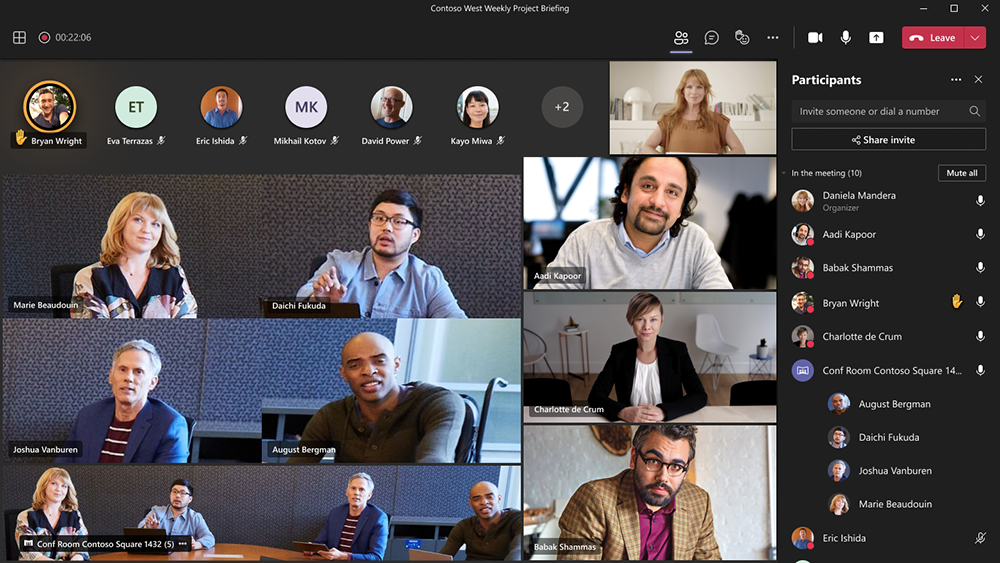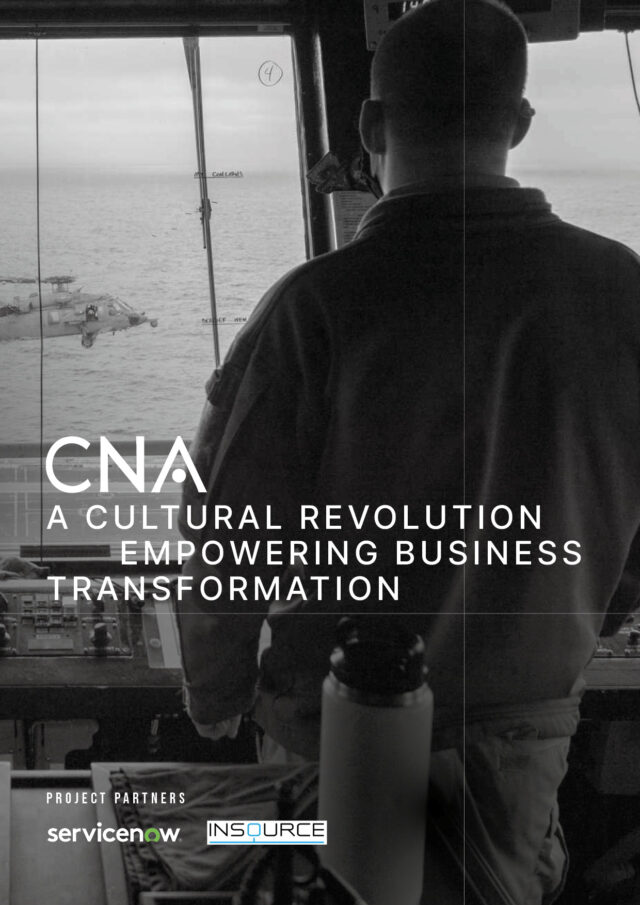Microsoft’s Azure cloud platform is trusted by 95% of Fortune 500 companies, US Government customers within the US Department of Defence (DoD), the Intelligence Community (IC), Federal Civilian agencies, as well as state and local governments and mission critical utilities. Laurent Pierre Jr, General Manager, Azure Customer Experience Engineering Support (CXP) at Microsoft, helps to lead a global support team focused on delivering consistent experiences for customers at various stages of their journey to the cloud.

A flexible approach to CX ensures that Microsoft’s smaller customers can also leverage documentation, forums, and online communications to resolve any issues they may encounter using the Azure platform. “We are also introducing an omni-channel modality to our Azure Government customers to provide additional ways for them to engage our support team members via the medium they are most comfortable with,” pledges Pierre Jr.
Azure ACE Program
The needs of Azure’s larger customers are evolving; they now require much more personalisation and ‘know me’ experiences than a traditional break/fix support team can provide, identifies Pierre Jr. “To respond to those needs, we established an Azure ACE Program for our government clients, where we ringfence our Azure Customer Engineers (ACEs) to strategic customers so that over time, we develop a deeper relationship and knowledge of their Azure environment.
This provides a way for my team to adequately support enterprise level customers who require a higher degree of engagement to ensure their successful use, adoption, and deployment of our Azure technologies within their environments. The feedback has been very positive and our team will continue to grow and adapt to ensure its success.”
Leveraging the cloud
There are many well-known companies who failed to innovate and as a result either ceased to exist or lost their leadership positions within their respective industries. Regardless of the industry that a company operates in, Pierre Jr believes it is a strategic imperative to assess both your current and future business needs to harness the unique competitive advantages that lie within the journey to the cloud.
“The catalyst for a company’s decision to migrate and modernise their mission critical workloads to the cloud typically stems from a required need for improved security and data protection, followed by data modernisation,” outlines Pierre Jr. “However, most important is the need to unlock the value of proprietary company data which can be used to drive better business decisions, increase operational excellence, and provide memorable customer experiences.”
The IT industry’s skill shortage and the ongoing war for talent is a real concern whether your business operates within the government, healthcare, telecommunications, financial services, retail, or manufacturing industry, he notes. Meanwhile, the costs of maintaining, upgrading or purchasing new on-premises equipment, while having the in-house team members technically skilled to manage and support the infrastructure, is a very expensive path to remain on as companies seek to rein in costs, drive operational efficiencies, and improve scalability.

“My advice to companies hesitant to move to the cloud is to first define a cloud migration and modernisation strategy with all the key stakeholders and business owners engaged in the process,” offers Pierre Jr. “Once key business outcomes are defined, the next step is to take a comprehensive inventory of all of your company’s digital estate such as your workloads, applications, data sources, VMs and other IT related assets and determine the best path to host these assets in the cloud. Outside vendors may be needed to assess your environment, create use cases, and develop a consolidated migration and modernisation plan – leverage their expertise.”
Pierre Jr recommends an iterative approach to learn, skill up your team and use the built-in tools available to automate the environment. “Companies often underestimate the organisational changes, people management and technology adoption required for a successful cloud migration. Governance of the cloud environment and setting up usage standards will be crucial to ensure that established budgets are not overrun. Finally, once workloads are operational in the cloud, securely managing the environment and leveraging the telemetry available to monitor it will ensure a well-managed environment for their workloads.”
“The key question IT Leaders and business owners should be asking is: What business challenges, operational issues and customer experience gaps can be solved with a well thought out cloud migration and modernisation strategy? Over the past two years the world and the technology supporting us has changed at an unprecedented pace. Companies have a choice to either adapt and thrive or simply cease to exist in the future economy,” reckons Pierre Jr.
Strategic partnerships
Over many decades, Microsoft has cultivated deep relationships to build a global partner ecosystem to the point where these partners influence more than 95% of Microsoft’s commercial revenue, either directly, or in partnership with the tech giant. Benefiting from strong collaborations within that partner community, its customers can leverage the expertise and Azure solutions either developed independently or co-created with Microsoft. A recent example of this type of collaboration was announced this October when Microsoft and RedHat offered a preview release of Azure Red Hat OpenShift in Azure Government.
“Azure Red Hat OpenShift was the first co-developed, jointly-operated Red Hat OpenShift service on the public cloud,” details Pierre Jr. “It offers a powerful on-ramp to the hybrid cloud by extending the same enterprise-grade Kubernetes used in private datacentres to the scale of Microsoft Azure.
Eric Brown, VP of Azure Global at Microsoft recently noted: “Azure Red Hat OpenShift already offers organisations a powerful way to tap the full scale and potential of Microsoft Azure’s commercial clouds. Extending that capability to Azure’s Government cloud portfolio allows customers to take advantage of the innovation of Red Hat OpenShift and the security features and reliability of cloud offerings built and accredited for the most sensitive workloads.”
Meanwhile, partners across Microsoft’s ecosystem include more than 800 independent software vendors, 17 device partners and over 1,000 systems integrators. “These partners are constantly working with Microsoft on developing and delivering innovative Teams devices, Teams apps and custom Teams solutions on our technology stack – all of which enable enhanced collaboration and increased productivity for customers globally,” confirms Pierre Jr.
Pandemic response
As the world continues to respond to COVID-19, Microsoft is working to do its part by ensuring the safety of its employees, striving to protect the health and well-being of the communities in which it works, and providing technology and resources to customers to help them achieve their best work while working remotely.
“The Microsoft Services Disaster Response (MSDR) Program has been providing technology and services throughout the pandemic and has completed 71 projects in 2020 and over 46 projects in 2021,” notes Pierre Jr. “These are COVID-19 relief efforts that have been requested by countries, states, regions, and not-for-profit organisations across the globe.”
Examples include the development and deployment of COVID-19 screening and triage bots, mobile apps for field workers, dashboards and analytics for public health agencies, and migrations to Azure to enable population health data management.
Azure Government
For over 40 years, Microsoft has partnered with the Department of Defence (DoD), the Intelligence Community (IC), and national security agencies to address America’s most complex challenges. Microsoft continues to invest in rapidly delivering new Azure Government capabilities to support mission-critical needs across all data classifications, with cloud experts at the ready to ensure the DoD’s success.
In February this year, Microsoft Azure announced the addition of 120 Government Services authorized for IL5 workloads in Azure Government – more than any other cloud provider. “We continue to drive expansion of our support for Department of Defence Security Requirements Guide (DoD SRG) Impact Level 5 (IL5) across all Azure Government regions,” confirms Pierre Jr.
The mission-critical cloud for US Government agencies and their partners, Azure Government, provide a range of compute across data classifications spanning mission cloud to intelligent edge, helping customers accelerate innovation with the broadest range of commercial capabilities and the most comprehensive compliance coverage of any government-only cloud.
Earlier this fall, through a recent DoD-sponsored project – Rapid Assured Microelectronics Prototypes (RAMP) using Advanced Commercial Capabilities – the DoD recently announced it has selected Microsoft to support the second phase of this project. “The primary goal of the project is to leverage commercial best practices to help accelerate the development process and bring reliable, secure state-of-the-art microelectronic design and manufacturing to national security and defence applications,” explains Pierre Jr.
Microsoft will be working with microelectronics industry leaders across the commercial and defence industrial base (DIB) that has already seen it:
Partnering with the US Army to rapidly prototype and field state-of-art mixed reality headsets, augmented by Azure, that provide soldiers access to a vast array of information and planning capabilities anywhere they are, to help improve situational awareness and increase soldier safety;
Enabling the DoD’s rapid shift to remote work through the deployment of the Continuous Virtual Remote environment, the “largest rollout ever implemented in this short amount of time,” as noted by the department’s then CIO, Dana Deasy;
Advancing digital transformation efforts and cloud-based productivity capabilities through the Defence Enterprise Office Solution, the DoD’s enterprise-wide solution to deploy Microsoft 365 software and services to their three million+ workforce;
Partnering with the US Navy to successfully deploy an enhanced weather model in a production-like Microsoft Azure environment, showcasing the potential scaling weather and ocean pattern predictions on demand to deliver faster, real-time tropical cyclone forecasts.
Securing the future
Microsoft has adopted a modern Zero Trust approach to security with four pillars based on the principle ‘never trust, always verify’. “This protects our company and our customers by managing and granting access based on the continual verification of identities, devices, and services,” adds Pierre Jr. “Based on the principles of verify explicitly, use least privileged access, and assume breach, a comprehensive Zero Trust architecture creates safeguards within and across identity, endpoints, apps, infrastructure, network, and data, partnered with increased visibility, automation and orchestration.”
Last year, Microsoft commissioned Hypothesis Group to develop a Zero Trust Adoption Report. Over 900 Security Decision Makers responded to online surveys related to their Zero Trust strategy, best practices, and barriers to adoption. Also, a handful of key in-depth interviews were conducted in the US across multiple industries – a resounding number of security decision-makers stated that developing a Zero Trust strategy is their number one security priority, with 96% stating that it’s critical to their organisation’s success. Microsoft has helped customers such as Vodafone, Bridgewater, Johnson Controls and many others to implement Zero Trust within their respective companies.

Building on trust
Trust. Integrity. Accountability. These are the three pillars that make a great IT leader reckons Pierre Jr. “They are the top leadership traits that I hold myself and my team accountable to,” he notes.
“To quote one of my favorite authors Stephen M.R. Covey: ‘Trust is the new currency of our interdependent, collaborative world.’ So, as a leader you must radiate trustworthiness and use every moment to build trust with those who you interact with. By creating a high trust environment, the speed at which you and your team can execute and perform becomes a force multiplier. The reason is because when you have established yourself as a trusted leader who delivers business results and executes well, less time is spent convincing stakeholders, as you have built trust across the business.”
Focused not only on creating memorable customer experiences and journeys for his customers, Pierre Jr’s team are continually working to proactively alert customers of trouble on their systems using advanced monitoring tools to avoid disruptions to their Azure environments and will continue to drive Azure platform improvements.
“Microsoft represents a collective of individuals united by a single, shared mission,” concludes Pierre Jr. “Our One Microsoft philosophy drives our ability to work together and achieve success for our customers. When we are open to different perspectives from our colleagues we can collaborate across boundaries to bring the best of Microsoft to our customers as one team. Through constant collaboration, our ideas are better, our products are better, and our customers are better served – turning them into Azure fans.”









